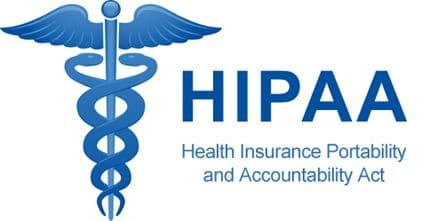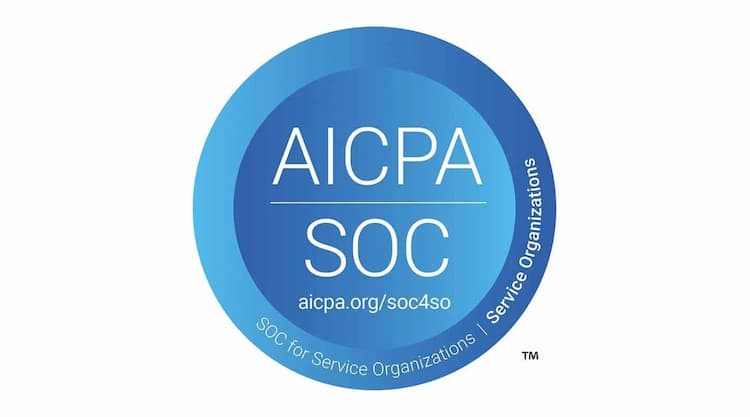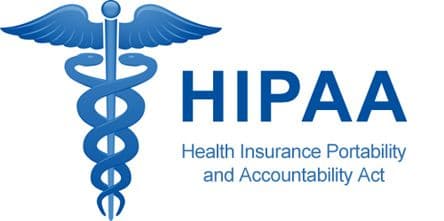26 JAN. 2024
BY PAMELA S.
SHARE
UNDERSTANDING HIPAA COMPLIANCE: THE ESSENTIALS
If you've engaged with health-related services in the last couple of decades, HIPAA, the Healthcare Insurance Portability and Accountability Act, is likely a term you're familiar with. For companies involved in healthcare, HIPAA compliance is the linchpin of a robust security strategy.
What is HIPAA Compliance?
Signed into law on August 21, 1996, HIPAA emerged to ensure the safety of patients' protected health information (PHI), be it in physical or electronic form. Initially designed to enhance health insurance coverage portability, HIPAA evolved to cover a broader spectrum, including safeguarding patient information.
Before HIPAA, a standardized set of security standards for healthcare data protection was absent. HIPAA addressed this gap by establishing requirements, such as the privacy rule and security rule, ensuring healthcare organizations actively safeguard patient data. The digitization of healthcare processes necessitated increased vigilance in compliance.
What is PHI?
PHI, protected health information includes a variety of personal and sensitive information that should be handled with care to maintain privacy and comply with regulations from the Health Insurance Portability and Accountability Act (HIPAA). The suggested summary breaks down the types of information considered as PHI. Here's a breakdown: Names: Full or partial names and initials. Geographic Information: Smaller than a state, except for the first three digits of a zip code under certain conditions. Dates: Dates (except the year) directly related to an individual, such as birth date, admission date, discharge date, date of death, and all ages over 89. All elements of dates indicative of such age, except they may be aggregated into a single category of age 90 or older. Contact Information: Telephone numbers, fax numbers, and electronic mail addresses. Identification Numbers: Social security numbers, medical record numbers, health plan beneficiary numbers, account numbers, certificate/license numbers. Vehicle and Device Information: Vehicle identifiers and serial numbers, including license plate numbers. Device identifiers and serial numbers. Online Identifiers: Web Universal Resource Locators (URLs), Internet Protocol (IP) address numbers. Biometric Data: Biometric identifiers, including finger and voice prints. Images: Full-face photographic images and any comparable images.
Who Falls Under HIPAA's Umbrella?
Covered entities, such as healthcare providers, insurers, and government healthcare programs, directly feel the weight of HIPAA. Business associates handling protected health information on behalf of covered entities also shoulder the responsibility.
The Importance of HIPAA for Your Business
For many, HIPAA is a regulation that surfaces during routine doctor's office paperwork. However, for businesses affiliated with healthcare, HIPAA is a make-or-break concern that can jeopardize an organization's existence if not managed diligently.
If your business falls under the "covered entities" outlined in HIPAA, compliance is not just a choice; it's critical imperative. There are both regulatory and practical reasons why prioritizing HIPAA compliance is non-negotiable.
Avoiding Severe Penalties
HIPAA isn't a mere suggestion, it's a stringent US law for qualifying organizations. Non-compliance exposes you to penalties issued by the Department of Health and Human Services' Office for Civil Rights. With four penalty tiers ranging from less severe to more severe violations, fines can escalate up to millions based on factors like violation severity and corrective actions taken. HIPAA compliance fines range from $100 to $1.5 million per year depending on the severity of the violation and intent.
Enhancing Overall Security
HIPAA rightfully exists to fortify the security of protected health information (PHI). It's not just more bureaucratic red tape, it is an important safety precaution every person is entitled to. Implementing HIPAA means fortifying your data security and reducing the risk of data breaches. The regulations go beyond legal penalties, offering intrinsic benefits for safeguarding sensitive information.
Preserving Patient Trust
Trust is the bedrock of healthcare and HIPAA compliance is integral to maintaining it. Patients will swiftly seek alternatives if trust is compromised. HIPAA violations erode this trust, making compliance indispensable for retaining patients.
Essentials of HIPAA Compliance: Breaking it Down
HIPAA compliance revolves around key rules, with the HIPAA Security Rule taking center stage since its introduction in 2005. This rule mandates safeguards in administrative, physical, and technical realms, as well as organizational requirements, policies and procedures, and documentation requirements to protect electronic protected health information (ePHI).
Administrative Safeguards: These include risk analysis, implementation of security measures, and maintaining continuous protection. Designation of security officials and role-based access are integral components. Physical Safeguards: Limiting physical access, managing facility access, and proper disposal of electronic media are the primary focus of this aspect. Technical Safeguards: Access controls, audit controls, and transmission security measures ensure the integrity and confidentiality of ePHI during electronic exchange.
Determining Your Business's Need for HIPAA Compliance
Contrary to common misconceptions, HIPAA doesn't cast a wide net over all health-related information. It specifically targets organizations classified as "covered entities" based on their business operations and interaction with private health information. These include health plans, healthcare providers engaged in electronic transactions, and healthcare clearinghouses.
How long does it take to become HIPAA compliant?
Phase 1: Assessment and Planning (1-2 Months)
Gather your team:
Assemble a team with representatives from various departments like IT, legal, and operations.
Conduct a risk assessment:
Identify potential vulnerabilities in your current data security practices.
Develop a compliance plan:
Outline your goals, strategies, and resources needed for achieving compliance.
Phase 2: Implementation and Remediation (3-6 Months)
Implement security measures:
Secure your electronic health records (EHR) system, encrypt data, and implement access controls.
Develop and implement policies and procedures:
Create HIPAA-compliant policies for handling protected health information (PHI).
Train your staff:
Train your employees on HIPAA regulations and best practices for protecting PHI.
Phase 3: Testing and Maintenance (Ongoing)
Conduct regular testing:
Regularly test your security measures and policies to identify and address any vulnerabilities.
Update your policies and procedures:
Keep your policies and procedures up-to-date with any changes in HIPAA regulations.
Monitor compliance:
Continuously monitor your systems and activities to ensure ongoing compliance.
Consequences of HIPAA Non-Compliance for Your Business HIPAA is a safety regulation, not a standard, which means that it is lawfully required. Non-compliance comes with sky-high penalty fines, loss of patient trust, and can even shutter your business. Avoid the following examples at all costs by maintaining HIPAA compliance:
Financial damage: Crippling fines: The tiered structure of HIPAA penalties can reach a staggering $1.5 million annually, draining resources and crippling even established businesses. Corrective action costs: Addressing non-compliance often requires expensive technological upgrades, training programs, and potentially, external security consultants. Legal battles: Legal fees can soar when facing lawsuits from both government agencies and patients whose privacy has been compromised. Reputational ruin: Public embarrassment: A single HIPAA breach can trigger negative media coverage and public scrutiny, tarnishing your brand and eroding the trust you've painstakingly built. Patient exodus: Loss of patient trust is a direct consequence of compromised privacy. Patients will readily seek care elsewhere if their confidentiality is not guaranteed. Operational paralysis: Business disruptions: Investigations and corrective actions can bring your workflows to a grinding halt, impacting patient care and hindering productivity. Future restrictions: In severe cases, the government may impose restrictions on your operations, and in the worst-case scenario, even closure. Human cost: Patient harm: Exposed or misused health information can have real-world consequences for patients, including identity theft, insurance fraud, and even physical harm. Emotional distress: Patients experiencing a HIPAA breach can suffer mental anguish and anxiety, potentially leading to additional legal liability. When Can PHI be shared? The terms 'reasonable effort' and 'minimum necessary' provide room for interpretation. The U.S. Department of Health and Human Services (HHS), which governs HIPAA, offers guidance without strict definitions.
According to HHS, the Minimum Necessary Rule relies on the professionalism of medical practices and staff to determine what information is reasonable to share. Three key aspects make PHI necessary:
Treatment: Sharing specific patient information with a nurse ensures proper care. Payment: Medical practices must share PHI with insurance companies for payment purposes. Health care operations: PHI sharing is acceptable in administrative, financial, legal, and quality improvement scenarios to run a business. For instance, sharing PHI with a business associate, like a transcriptionist, is permissible. In instances where there is a severe and imminent threat to the safety of an individual or the public, the disclosure of a patient's PHI is permissible. This may include sharing information with law enforcement, family members, or any other party deemed capable of mitigating or preventing the identified threat.
What is a Data Breach?
Picture this: 'There’s been a data breach.' A dreaded phrase, especially for healthcare leaders. A breach of unprotected protected health information (PHI) could lead to HIPAA penalties, lawsuits, and an organization-wide headache.
Understanding the HIPAA Breach Notification Rule is not just prudent, it’s a lifeline for your organization. Let's break down what this rule entails and how to navigate it effectively. Decoding the HIPAA Breach Notification Rule: This rule mandates organizations to inform affected individuals and the U.S. Department of Health and Human Services (HHS) when unsecured PHI faces a breach. The HHS’s Office for Civil Rights (OCR) investigates breaches with a focus on cases involving 500+ patient records. Navigating HIPAA Breach Notification:
Compliance with this rule involves adhering to specific timelines and notification methods: Timeline: Report breaches within 60 days of discovery to avoid OCR fines. Swift notification is recommended, minimizing delays. Delivery and Content: Notify affected individuals through written notices or emails. For outdated contact info, utilize websites or local broadcasts for 90 days. Clearly explain the breach, compromised information, response measures, prevention steps, and guidance for affected individuals. HHS and Media Notification: Report breaches affecting under 500 people annually, within 60 days of the year-end. Breaches involving over 500 individuals must be reported to HHS within 60 days, with media alerts to local outlets. Responsibility of Business Associates: Business associates must assist covered entities in breach execution. Provide affected individual identification and breach details to the covered entity. Defining a Breach: A breach is the unauthorized use, access, or disclosure of unsecured PHI compromising its security and privacy. PHI includes 18 identifiers, covering names, dates, and more. Video and image PHI, along with electronically stored PHI, are protected. Securing PHI to Avoid Breaches: PHI breaches occur when data lacks proper security measures. Encryption, routine destruction, and employee training are crucial. Failure to comply can lead to severe consequences, as seen in the Presence Health case, settling a violation for $475,000. Exceptional Circumstances: A 'low probability of compromise' condition applies, allowing an assessment of unauthorized use or disclosure. Breach exceptions cover unintentional employee actions, accidental disclosures between authorized persons, and cases where PHI compromise is highly unlikely.
Understanding these nuances is key to HIPAA compliance and safeguarding your organization from the aftermath of a PHI breach. It's not just about rules, it's about ensuring trust, security, and the longevity of your healthcare practices.
Securing Your Business with HIPAA Compliance If you're unsure of your business's HIPAA compliance, it's time to prioritize it. An automated compliance platform like SKELDUS simplifies the process by conducting an in-depth scan against HIPAA requirements, offering a precise checklist and documentation. With SKELDUS, HIPAA compliance becomes manageable, ensuring the safety of your business and patients.
Maintaining HIPAA Compliance: A Continuous Journey
Staying compliant demands proactive measures: Thorough Activity Logs: Detailed logs of PHI-related activities, monitored for potential risks. Secure Log-Ins: Strict password policies organization-wide, enforced for all employees and contractors. Layered Security: Implementing multi-layered security measures, such as multi-factor authentication and encryption, enhances protection.
In conclusion, HIPAA compliance is both a legal obligation and a commitment not just a legal obligation; it's a commitment to safeguarding patient trust and ensuring the confidentiality, integrity, and availability of sensitive health information. Navigating the complexities of compliance requires dedication, a robust strategy, and the right tools to automate and streamline the process. With SKELDUS your journey toward continuous HIPAA compliance becomes a regulatory necessity and a strategic advantage.

26 JAN. 2024
BY PAMELA S.
UNDERSTANDING HIPAA COMPLIANCE: THE ESSENTIALS
If you've engaged with health-related services in the last couple of decades, HIPAA, the Healthcare Insurance Portability and Accountability Act, is likely a term you're familiar with. For companies involved in healthcare, HIPAA compliance is the linchpin of a robust security strategy.

19 JAN. 2024
BY PAMELA S.
UNDERSTANDING SOC 2 COMPLIANCE: THE ESSENTIALS
SOC 2 is like a security badge for organizations, especially in the tech world. It’s a set of rules we follow to make sure your data is super safe with us. Think of it as our promise to build a fort around your information! Discover how SKELDUS can help you in achieving SOC2 compliance!
